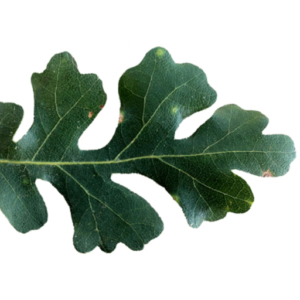From both an ecological and evolutionary perspective, how far pollen moves in contemporary populations is a critical question. Pollen grains, whether carried by wind or by animal pollinators, often moves longer distances than do seeds, so pollen movement can provide critical genetic connections between populations in naturally or artificially fragmented landscapes. In combination with seed dispersal, pollen movement determines the size of the local genetic neighborhood, which influences the power of both natural selection and genetic drift. We examine gene flow via pollen movement in populations of trees in natural and human-modified landscapes.
Among our contributions, we’ve developed a statistical approach called TwoGener, in collaboration with Peter Smouse (Rutgers), Rodney Dyer (now at Virginia Commonwealth University), and Robert Westfall (US Forest Service). This approach compares the genetic structure of the pollen pool to that of the adult population (the two generations of the name) to make inferences about the effective number of pollen donors, the mean effective dispersal distance, and the effective mating neighborhood. This approach has been further developed theoretically to allow the estimation of several gene flow parameters, and has led to a number of empirical papers which examine pollen movement from my group of collaborators as well as forest geneticists and ecologists in Europe and the US.
The TwoGener method is implemented in POLDISP, written by Juan José Robledo-Arnuncio and Frédéric Austerlitz, and in the GenAlEx software add-on for Microsoft Excel™, written by Rod Peakall and Peter E. Smouse.
Our work on pollen movement has been funded by the US National Science Foundation.
Some papers on pollen movement from the Sork lab
Pluess, A. R., V. L. Sork, B. Dolan, F. W. Davis, D. Grivet, K. Merg, J. Papp, and P. E. Smouse. 2009. Short distance pollen movement in a wind-pollinated tree, Quercus lobata (Fagaceae). Forest Ecology and Management 258:735-744.
Grivet, D., J. J. Robledo-Arnuncio, P. E. Smouse, and V. L. Sork. 2009. Relative contribution of contemporary pollen and seed dispersal to the effective parental size of seedling population of California valley oak (Quercus lobata, Née). Molecular Ecology 18:3967-3979.
Austerlitz, F., C. Dutech, P. E. Smouse, F. Davis, and V. L. Sork. 2007. Estimating anisotropic pollen dispersal: a case study in Quercus lobata. Heredity 99:193-204.
Sork, V. L., and P. E. Smouse. 2006. Genetic analysis of landscape connectivity in tree populations. Landscape Ecology 21:821-836.
Fernandez-Manjarres, J. F., J. Idol, and V. L. Sork. 2006. Mating patterns of black oak Quercus velutina (Fagaceae) in a Missouri oak-hickory forest. Journal Of Heredity 97:451-455.
Dutech, C., V. L. Sork, A. J. Irwin, P. E. Smouse, and F. W. Davis. 2005. Gene flow and fine-scale genetic structure in a wind-pollinated tree speciesQuercus lobata (Fagaceae). American Journal of Botany 92:252-261.
Sork, V. L., P. E. Smouse, V. J. Apsit, R. J. Dyer, and R. D. Westfall. 2005. A two-generation analysis of pollen pool genetic structure in flowering dogwood, Cornus florida (Cornaceae), in the Missouri Ozarks. American Journal of Botany 92:262-271.
Valbuena-Carabana, M., S. C. Gonzalez-Martinez, V. L. Sork, C. Collada, A. Soto, P. G. Goicoechea, and L. Gil. 2005. Gene flow and hybridisation in a mixed oak forest (Quercus pyrenaica Willd. and Quercus petraea (Matts.) Liebl.) in central Spain. Heredity 95:457-465.
Dyer, R. J., R. D. Westfall, P. E. Smouse, and V. L. Sork. 2004. Two-Generation analysis of pollen flow across a landscape V: A stepwise approach for extracting factors contributing to pollen structure. Heredity 92:204-211
Smouse, P. E. and V. L. Sork. 2004. Measuring pollen flow in forest trees: A comparison of alternative approaches. Forest Ecology and Management 197:21-38.
Austerlitz, F., C. W. Dick, C. Dutech, E. K. Klein, S. Oddou-Muratorio, P. E. Smouse, and V. L. Sork. 2004. Using genetic markers to estimate the pollen dispersal curve. Molecular Ecology 13:937-954.
Austerlitz, F., and P. E. Smouse. 2002. Two-generation analysis of pollen flow across a landscape. IV. Estimating the dispersal parameter. Genetics 161:355-363.
Sork, V. L., F. W. Davis, P. E. Smouse, V. J. Apsit, R. J. Dyer, J Fernandez-M, and B Kuhn. 2002. Pollen movement in declining populations of California Valley Oak, Quercus lobata: Where have all the fathers gone? Molecular Ecology 11 (9): 1657-1668.
Sork V. L., R. J. Dyer, F. W. Davis, P. E. Smouse. 2002. Mating system in California Valley oak, Quercus lobata Née. Pp 427-440 in R. Standiford and D. McCreary (eds.), Oaks in California’s Changing Landscape. Fifth symposium on Oak Woodland savanna. San Diego, CA.
Apsit, V. J., V. L. Sork, and R. J. Dyer. 2002. Patterns of mating in an insect-pollinated tree species in the Missouri Ozark Forest Ecosystem Project (MOFEP). Pages 213-227 in Shifley, R. Stephen and J. M. Kabrick (eds.). Proceedings of the Second Missouri Ozark Forest Ecosystem Symposium: Post-treatment results of the landscape experiment, 2000 October 17-18; St. Louis, MO. Gen. Tech. Rep. NC-227. St. Paul, MN: U.S. Department of Agriculture, Forest Service, North Central Forest Experiment Station: 228 pp.
Smouse, P. E., R. J. Dyer, R. D. Westfall, and V. L. Sork. 2001. Two-generation analysis of pollen flow across a landscape. I. Male gamete heterogeneity among females. Evolution 55:260-271.
Austerlitz, F., and P. E. Smouse. 2001a. Two-generation analysis of pollen flow across a landscape. II. Relation between Φft, pollen dispersal and interfemale distance. Genetics 157:851-857.
Austerlitz, F., and P. E. Smouse. 2001b. Two-generation analysis of pollen flow across a landscape. III. Impact of adult population structure. Genetical Research 78:271-280.
Dyer, R. J. and V. L. Sork. 2001. The effects of autocorrelated patterns among adults on pollen pool differentiation. Pages 89-93 in B. Degen, M. D. Loveless, and A. Kremer (eds). Modeling and experimental research on genetic processes in tropical and temperate forests. Embrapa Amazonia Oriental. Belém PA, Brazil.
Dyer, R. J. and V. L. Sork. 2001. Pollen pool heterogeneity in shortleaf pinePinus echinata Mill. Molecular Ecology 10: 859-866.
